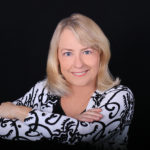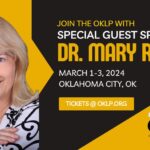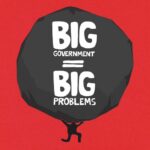We expect licensing laws to protect us from shoddy service providers whose mistakes could kill. However, studies show that the licensing laws themselves are often even more deadly.
For example, licensing laws lower the number of electricians in a given area by imposing extra requirements. Fewer electricians mean higher prices. To save money, people attempt to do their own wiring or go without needed repairs. As a consequence, accidental electrocutions go up in states that have the most stringent licensing requirements for electricians. Licensing laws intended to protect us can and do kill.
The observation that licensing laws lower the overall quantity of quality service takes on a very personal meaning when we realize that one of the most highly regulated (licensed) sectors of our economy is health care. Dental hygiene is poorer in states with the most restrictive licensing requirements for dentists because fewer people can afford regular checkups. For the same reason, the incidence of blindness increases in areas with the most stringent licensing for optometrists.
Currently, licensing laws for physicians are even more restrictive than those for dental and eye care. Consequently, physician licensing might be expected to cause even greater harm. Medical licensing increases prices, lowers the quantity of quality service, and puts a great deal of stress on our medical providers. As a consequence, physicians have one of the highest suicide rates in the United States.
Licensing of doctors was common in the early years of the United States, but was abandoned in the mid-1800s. Licensing excluded competent healers, hindered the development of alternative therapies (e.g., herbal medicine), created a monopoly of established practices (e.g., bleeding), and retarded innovative research.
Why, if licensing of physicians was so harmful, was it re-instated in the twentieth century? The American Medical Association (AMA) wanted to practice “professional birth control,” limiting the number of physicians to increase doctors’ income. This motivation is not at all unusual: licensing laws are usually demanded, not by consumers, but by the professionals themselves! Legislators ask the established practitioners to determine the requirements for new entrants.
Not surprisingly, the established physicians grandfathered themselves in, set high standards for newcomers, and outlawed entire specialties. Most doctors supported such measures in the belief that the quality of health care would be improved.
Because AMA members controlled the licensing boards, they influenced the behavior of practicing physicians by threatening to revoke their licenses if, for example, they advertised discounts. When acupuncture was introduced into the United States, the AMA tried to outlaw its practice by anyone other than licensed medical doctors. Other specialties that are adequately, and more economically, performed by paraprofessionals (e.g., midwives, nutritionists) faced similar sanctions.
As usual, the poor suffer most from the aggression of licensing laws. Indeed, opponents of such laws feared that the poor would be deprived of medical care altogether as costs increased. Rural areas, which could no longer support a full-time physician, had to do without.
Medical licensing radically cut the number of black and female doctors too. In 1910, seven medical schools specialized in training black physicians. By 1944, only two had survived the scrutiny of the AMA-influenced state licensing boards; half of the total medical schools were unable to get accreditation and closed. The number of women medical students was cut almost in half as schools reserved the limited medical school placements for men.
The poor were excluded from becoming physicians as well. Students of medical schools that catered to the working class by providing flexible training regimens, such as night school and apprenticeship, were no longer given accreditation by the licensing boards. Without the ability to work while they trained, only the affluent could become physicians.
Studies have shown that nurses and other non-physicians are able to diagnose and treat common conditions as competently as licensed medical doctors. In the United States, however, they were forbidden to do so legally for decades.
What a shame that so much wealth creation was sacrificed to establish, enforce, and fight such wasteful regulations! As an undergraduate, I met a military veteran who had served in Vietnam and who hoped to go to medical school after he graduated from college. Because the U.S. Army never had enough physicians available for the large numbers of wounded, he often found himself performing emergency surgery in an attempt to save soldiers who were otherwise doomed to bleed to death. This man was obviously quite capable of creating wealth by assisting in a hospital operating or emergency room, or by suturing superficial wounds. However, until he completed many years of medical school, he was unable to use his skills. Even in peacetime, medical personnel in the military are permitted to do procedures that would land them a prison sentence in the civilian world.
You are probably asking yourself how we’d find competent electricians or surgeons without licensing laws. One time-honored way to find competent service providers is by referral. However, we might not know someone who can recommend a qualified practitioner.
Does this mean that we would have to spend hours of research to find a competent doctor? Thankfully, the answer is a resounding, “No!” Independent rating services, both on the Internet and elsewhere, already provide a wealth of information.
Certification services, which give a Seal of Approval to a product or service sometimes operate invisibly in the background. For example, we don’t worry that electrical equipment will be faulty, yet our appliances and electrical hardware are not usually licensed or regulated by government. Instead, a private certifying company, Underwriters Laboratories Inc. (UL), tests more than six billion individual products and grants its UL Seal to those that meet its exacting standards. Manufacturers pay an evaluation fee to fund the testing.
The entire process is voluntary in most countries, including the United States. If you or I wish to purchase an uncertified electrical appliance, we can. However, most retailers won’t stock an appliance or electrical component without the UL assurance of quality. As a consequence, manufacturers routinely apply for UL certification.
What keeps certifiers like UL honest? Why wouldn’t it simply give its Seal of Approval to any manufacturer that could pay the testing fee? Because the UL mark is voluntary, product makers will seek it out only as long as it represents quality. If UL certifies defective products, its mark will become worthless; manufacturers will turn to other certifying agencies, which already compete with UL. The dominance that UL now enjoys in the electrical certification market results from its excellent service to the public.
Why would you want certification instead of licensing of health care providers? If you were seriously ill and a doctor was treating people in an unorthodox way, he or she might find it difficult to become certified by their professional organization. However, if you were terminally ill, you might want to take a chance on a novel therapy. If the doctor’s treatment proves to work, it could save your life. With certification, you have the final say; with licensing, medical boards decide for you and usually delay introduction of new modalities.
In addition, certification is preferable to licensing because the number of practitioners increases in areas with certification compared to locations that have licensing or nothing at all. More practitioners mean lower prices and a larger quantity of quality service delivered, especially to the poor. More freedom from government aggression helps us all!







